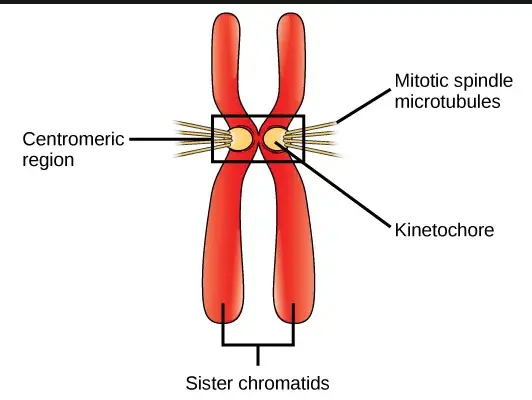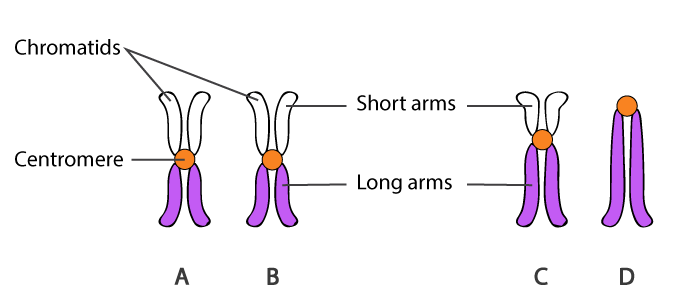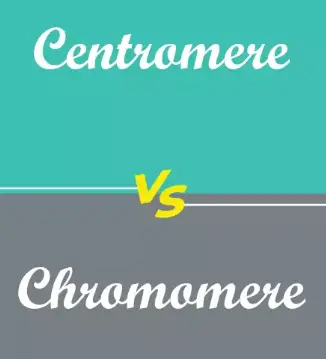Genetics forms the backbone of biological sciences, unraveling the complexities of life through the microscopic structures within our cells. Among these structures, centromeres and chromomeres stand out for their critical roles, yet they are often confused due to their intricate functions and similar sounding names. This introduction aims to clarify these important genetic components, providing a clear distinction and understanding of their significance in genetics.
Centromeres are key regions of chromosomes that ensure proper cell division by securing the kinetochores to the mitotic spindle. Chromomeres, on the other hand, are the visibly thickened regions of a chromosome that indicate areas of higher genetic activity. Though both are essential for the genetic organization and stability, their functions and structures are distinctly different, impacting various genetic processes and studies.
By focusing on the specifics of each structure, this discussion illuminates their unique roles and contributions to genetic stability and expression. The subtle nuances between centromeres and chromomeres are pivotal, influencing everything from cell division to genetic transcription, and are crucial for advanced genetic research and medical applications.

Key Concepts
Genetic Material Basics
Definitions: DNA and Chromosomes
DNA, or deoxyribonucleic acid, is the molecular blueprint for all living organisms. It carries the instructions used in the growth, development, functioning, and reproduction of all known living organisms and many viruses. DNA molecules are made up of two twisting, paired strands, often known as a double helix.
Chromosomes are structures within cells that contain DNA and protein. They package and manage the DNA, condensing the complex structures into more manageable forms. This packaging allows for the efficient transmission of genetic information during cell division and plays a critical role in gene expression and regulation.
Role of Genetic Structures in Cell Division
Genetic structures such as DNA and chromosomes are vital during cell division, specifically during processes like mitosis and meiosis. These structures ensure that genetic information is accurately copied and distributed into daughter cells. Key components of chromosomes, like centromeres and chromomeres, play significant roles in these processes.
Centromeres Explained
Definition and Function
A centromere is the part of a chromosome that links sister chromatids (or the two halves of the chromosome). During mitosis, centromeres are critical for the movement of chromosomes toward opposite ends of the cell. They serve as attachment points for spindle fibers, the structures that pull chromosomes apart.
Structure Details
Centromeres are typically composed of specific DNA sequences that are rich in base pairs adenine and thymine. This DNA is associated with specific proteins called histones that help structure the chromosome. The specific region within the centromere where the spindle fibers attach is known as the kinetochore, which is a complex of proteins essential for chromosome sorting.
Importance in Mitosis and Meiosis
In both mitosis and meiosis, the centromere is fundamental for the accurate distribution of chromosomes to daughter cells, a process crucial for genetic diversity and stability. Errors in centromere function can lead to conditions like aneuploidy, the presence of an abnormal number of chromosomes in a cell, which is linked to various genetic disorders and cancers.
Chromomeres Explained
Definition and Function
Chromomeres are compacted regions of a chromosome that become visible as discrete beads along the chromosome during the metaphase stage of cell division. These regions are thought to be areas of higher genetic activity and are important in the regulation of gene expression.
Structural Characteristics
Chromomeres are characterized by their beaded appearance on chromosomes, which results from the coiling and supercoiling of DNA around histones. This structure affects how genes are accessed and read by the cell’s machinery, thus influencing gene expression.
Role in Genetic Expression
The organization of chromomeres within a chromosome can influence gene expression significantly. Genes located in less condensed chromomeres are usually more actively transcribed than those in tightly packed areas. Understanding chromomere distribution helps in mapping gene locations and functions.
Comparative Analysis
Structural Differences
Physical Characteristics of Centromeres vs. Chromomeres
Centromeres and chromomeres differ significantly in structure and function. Centromeres are identified by their unique sequence and specialized proteins and are essential for chromosome movement. Chromomeres, by contrast, do not play a direct role in chromosome segregation but are crucial for gene regulation due to their role in DNA packaging.
Location Differences on the Chromosome
Centromeres are typically located near the middle of chromosomes but can vary in position, leading to different chromosome shapes. Chromomeres are found along the length of the chromosome and can be seen clearly during certain stages of cell division.
Functional Distinctions
Role in Chromosome Segregation
The primary role of the centromere is to ensure that chromosomes are correctly divided and pulled to opposite ends of the dividing cell. This prevents genetic diseases and disorders that can result from improper chromosome separation.
Impact on Gene Regulation and Expression
Unlike centromeres, chromomeres play a significant role in gene regulation. Their structural organization influences how genes are accessed and expressed, which is crucial for normal cell function and development.
Importance in Genetic Studies
Centromeres in Disease and Disorders
Malfunctions in centromere function can lead to various diseases, including cancers and genetic disorders like Down syndrome. Studying centromeres allows researchers to understand these conditions better and develop potential therapies.
Chromomeres and Gene Mapping
Chromomeres help scientists identify the regions of chromosomes that are rich in genes and understand their behavior during cell division. This knowledge is critical for gene mapping and developing genetic therapies.

Research Insights
Latest Findings
Recent Studies on Centromere Behavior
Recent research on centromeres has highlighted their complexity and essential roles beyond mere points of attachment for spindle fibers. Scientists have discovered that centromeres are dynamic structures that can evolve and adapt, which has significant implications for species evolution and chromosome stability. Studies have shown that abnormalities in centromere structure or function can lead to chromosome mis-segregation and are often observed in cancer cells, shedding light on potential new targets for cancer therapy.
Advances in Chromomere Research
In the realm of chromomeres, advancements have been particularly notable in understanding how these structures influence gene expression. Recent studies have utilized high-resolution imaging techniques to observe chromomeres in real-time, revealing that they play a critical role in the organization of the genome during key stages of cell division. This has provided new insights into how genetic material is regulated and expressed in different tissues and stages of development.
Technological Advancements
Tools for Studying Genetic Structures
The field of genetics has greatly benefited from technological advancements in microscopy and molecular biology. Tools such as CRISPR-Cas9 for genome editing and advanced microscopy techniques like super-resolution imaging have revolutionized our ability to study and manipulate genetic structures at unprecedented detail and scale. These tools allow researchers to pinpoint the exact location and function of centromeres and chromomeres within the cell, leading to a deeper understanding of their roles.
Impact of Technology on Understanding Centromeres and Chromomeres
Technology has not only improved our understanding of genetic structures but also how these structures can be manipulated for scientific and medical purposes. For example, the use of fluorescence in situ hybridization (FISH) has enabled scientists to observe the behavior of centromeres and chromomeres in live cells, providing real-time data on how genetic diseases might develop and how they can be treated.
Practical Applications
Medical Implications
Centromere-Related Diseases
The study of centromeres has important medical implications, particularly in understanding conditions like cancer and genetic disorders such as trisomy 21 (Down syndrome). These conditions are often associated with centromere dysfunction, which can lead to the mis-segregation of chromosomes and an abnormal number of chromosomes in cells. Understanding centromere behavior can help in developing targeted therapies that address these chromosomal abnormalities at their root cause.
Chromomere Research in Genetic Therapy
Chromomeres have become a focal point in genetic therapy research due to their role in regulating gene expression. By targeting specific chromomeres, scientists hope to activate or silence genes that are responsible for certain diseases. This research is particularly promising in the treatment of genetic disorders and diseases like cancer, where gene regulation plays a crucial role.
Biotechnological Uses
Chromosome Engineering
Chromosome engineering, which involves the artificial manipulation of chromosomal structures to alter genetic material, relies heavily on understanding centromeres and chromomeres. By modifying these structures, scientists can create custom chromosomes that carry beneficial genes, such as those conferring resistance to diseases in crops or producing therapeutic proteins in pharmaceutical applications.
Future Prospects in Genetic Manipulation
The future of genetic manipulation looks promising with the continued advancement in our understanding of centromeres and chromomeres. Potential applications include the development of more sophisticated gene therapies, custom-designed organisms for agriculture or medicine, and even the correction of genetic defects before birth. As technology and knowledge advance, the possibilities for beneficial manipulation of genetic material expand, promising to revolutionize fields from medicine to agriculture.
FAQs
What are centromeres?
Centromeres are specialized regions of a chromosome that play a crucial role in cell division. They serve as attachment points for spindle fibers during mitosis and meiosis, ensuring accurate distribution of chromosomes to daughter cells.
What are chromomeres?
Chromomeres are condensed regions of DNA visible along chromosomes during certain stages of cell division. These areas are thought to be genetically active and are important for understanding the organization and regulation of genes within chromosomes.
How do centromeres function?
Centromeres function primarily during cell division, where they facilitate the attachment of chromosomes to the spindle apparatus through kinetochores. This attachment is essential for the equitable distribution of genetic material between daughter cells.
Why are chromomeres important?
Chromomeres are important because they help in identifying regions of high genetic activity within chromosomes. Their visibility during certain stages of cell division provides clues about gene expression and regulation.
What distinguishes centromeres from chromomeres?
While both centromeres and chromomeres are parts of chromosomes, centromeres are crucial for chromosome movement and segregation during cell division. Chromomeres, however, are involved in the regulation of gene expression and can be indicative of gene density and activity.
Conclusion
The study of centromeres and chromomeres opens up a detailed view of the chromosome’s architecture and its functional dynamics. These structures are not only fundamental to understanding genetic processes but also essential in the advancement of genetic research, offering insights into chromosome behavior during cell division and gene expression. As research progresses, the intricate details of these genetic elements continue to illuminate the complexities of life at a molecular level.
In conclusion, appreciating the differences and functionalities of centromeres and chromomeres enhances our understanding of cellular processes and genetic stability. This knowledge is pivotal in fields such as genetic engineering, cancer research, and chromosome therapy, promising advancements in medical technology and treatments.

